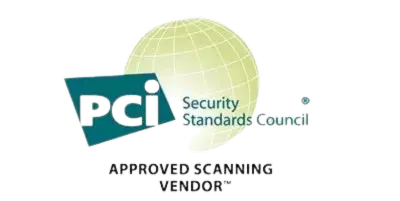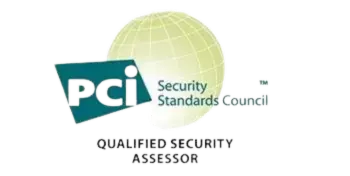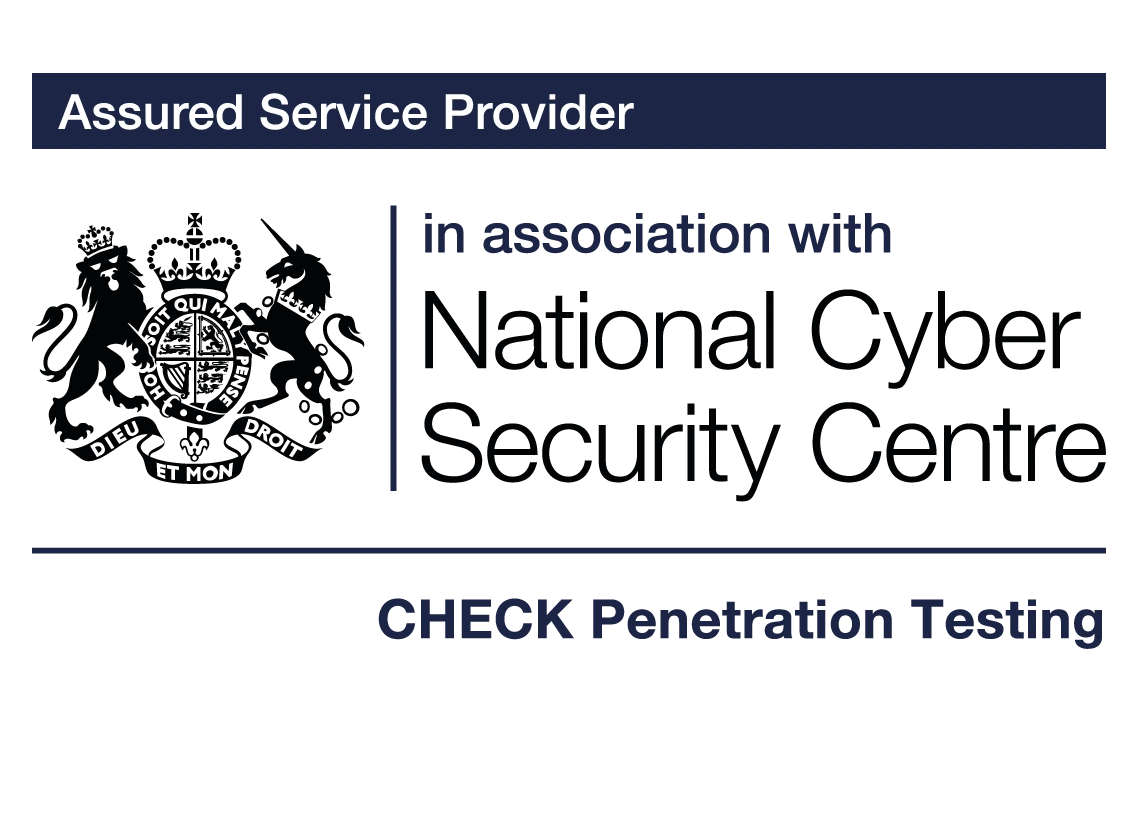What Is Cloud Penetration Testing?
Cloud Penetration testing, commonly referred to as a Cloud pen test, is a specialised form of simulated cyber attack against a cloud environment where security experts attempt to find and exploit vulnerabilities. It is a proactive approach to identify, analyse, and address cyber-security vulnerabilities within a cloud environment. This form of testing is essential due to the unique characteristics and inherent complexities of cloud computing, which include shared resources, dynamic provisioning, and third-party control of infrastructure.

Common Questions
Several questions frequently arise regarding the purpose, methodology, and implementation of Cloud Penetration Testing. Below are answers to some of the most commonly asked questions to help clarify the concept and practice of cloud penetration testing.
What is Cloud Penetration Testing?
Cloud penetration testing is a security exercise where experts simulate cyber attacks against an organisation’s cloud-based resources to identify vulnerabilities and test the effectiveness of their security measures. This practice is crucial for maintaining robust cloud security and ensuring that the cloud services an organization relies on are well-protected against potential threats.
How Does Cloud Penetration Testing Differ from Standard Penetration Testing?
Unlike standard penetration testing, which might focus on internal networks and systems within a physical infrastructure, cloud penetration testing specifically targets cloud-based services and configurations. It deals with the unique aspects of cloud security, such as the shared responsibility model, and challenges associated with multi-tenancy and dynamic scaling.
What are the Different Types of Cloud Penetration Testing?
The main types include black box, grey box, and white box testing. Each type varies in the amount of information provided to the testers beforehand and thus offers different insights:
- Black Box Testing: The testers have no prior knowledge of the system.
- Grey Box Testing: Testers have some limited knowledge or credentials.
- White Box Testing: Testers have full access, including administrative privileges.
Who Should Consider Cloud Penetration Testing?
Any organisation that utilises cloud services should consider cloud penetration testing to secure its operations and data. This is especially important for sectors handling sensitive information, such as finance, healthcare, and government, where data breaches can have severe consequences.
What Skills are Required for Cloud Penetration Testing?
Professionals engaged in cloud penetration testing typically need a deep understanding of cloud architectures, proficiency in security tools and techniques specific to cloud platforms, and skills in areas like network security, application security, and possibly coding. Critical thinking and problem-solving are also essential.
How Often Should Cloud Penetration Testing Be Conducted?
The frequency of cloud penetration testing can vary based on several factors, including the organisation's size, the nature of the data it handles, and its exposure to changes in technology and threats. Typically, it is recommended to conduct these tests at least annually or bi-annually, or whenever significant changes are made to the cloud infrastructure.
What are the Ethical Considerations in Cloud Penetration Testing?
Ethical considerations include ensuring all testing is authorised by the appropriate stakeholders, adhering to legal and regulatory requirements, respecting privacy, and avoiding disruption to services. Testers must operate within agreed boundaries and scopes to ensure that their activities are responsible and constructive.
Our Cloud Testing Process
When undertaking cloud testing for leading cloud platforms, whether it's Microsoft, Amazon, Google, or Oracle, clients typically provide us with access permissions. This allows us to set up a 'jump box' or to utilize an existing predefined image for manual penetration testing. Beyond that, our meticulous approach includes auditing cloud service configurations. We also employ Open Source Intelligence (OSINT) tools to uncover any publicly exposed data and detect common configuration oversights.
Key Components Of Our Cloud Penetration Tests
Cloud penetration testing aims not only to uncover vulnerabilities but also to simulate real-world attack scenarios to understand potential impacts and develop appropriate responses and mitigation strategies.

- Cloud Configuration and Deployment Review: Ensuring that all cloud resources are configured securely and in accordance with best practices.
- Identity and Access Management (IAM) Evaluation: Testing mechanisms for authenticating and authorizing user access to cloud resources to prevent unauthorized access.
- Service and Data Integrity Checks: Verifying that cloud services and data storage options are robust against tampering and unauthorised changes.
- Network and Communication Security: Assessing the security measures in place to protect data in transit, including encryption protocols and network access controls.
- Compliance Audits: Ensuring cloud services comply with relevant legal, regulatory, and policy standards like GDPR, HIPAA, or PCI-DSS.
Types of Cloud Penetration Testing
Cloud penetration testing is crucial for uncovering vulnerabilities that could compromise the security of cloud-based systems. The approach taken can vary greatly depending on the level of knowledge and access granted to the testers. This variation allows organisations to simulate different types of attackers, from those with no inside knowledge to insiders with significant access privileges. The primary types of cloud penetration testing methods and how they differ in approach and execution are detailed below:

Black Box Testing
- Description: In black box testing, the penetration tester has no prior knowledge of the internal structures or workings of the cloud environment they are testing. They approach the system similarly to how an external hacker would, using publicly available information and standard hacking tools.
- Process: The tester tries to identify and exploit vulnerabilities through publicly exposed interfaces such as APIs, web applications, and server endpoints. This type of testing is valuable for understanding how an attacker might gain unauthorized access from the outside.
- Advantages: This method can realistically simulate an external cyber attack, providing insights into what an actual attacker might be able to discover and exploit.
- Limitations: Without insider knowledge, some internal vulnerabilities might remain undetected.
Grey Box Testing
- Description: Grey box testing offers a middle ground, where the tester has some knowledge of the system and possibly limited credentials. This could include basic user accounts, API documentation, or architecture diagrams.
- Process: Armed with partial knowledge, testers can more effectively target specific parts of the cloud system, such as application logic or more complex authentication mechanisms. This method allows for more focused testing of potential internal and external threat scenarios.
- Advantages: It provides a balance between thoroughness and efficiency, allowing testers to simulate attacks that can occur both from outside and from someone with limited system access.
- Limitations: While more in-depth than black box testing, it might not uncover deep systemic issues that would be apparent only with full access.
White Box Testing
- Description: White box testing provides the penetration tester with complete knowledge of the cloud environment. This comprehensive knowledge includes credentials, source code, architecture diagrams, and possibly even server-level access.
- Process: Testers use this comprehensive knowledge to conduct a thorough and detailed examination of the cloud infrastructure and applications. They can review code for vulnerabilities, test internal APIs, and assess the configuration of managed services and databases.
- Advantages: This method is the most comprehensive, allowing for an exhaustive security evaluation of the cloud environment. It can identify vulnerabilities at all levels, from network configurations to application bugs.
- Limitations: It requires a high level of trust in the tester and may not simulate an external attacker's perspective.
Choosing the Cloud Penetration Testing Type
Choosing the right type of cloud penetration testing depends on several factors, including the nature of the cloud deployment, the sensitivity of the stored data, the potential impact of a breach, and regulatory requirements. Often, a combination of these testing types will be used to provide a comprehensive security assessment, covering all possible entry points and insider threats.
Organisations can maximise their security efforts by aligning the chosen testing method with their specific security needs and threat models. This targeted approach ensures that vulnerabilities are not just identified but are also prioritised based on the realistic risk they pose, enabling efficient and effective remediation efforts.
The Shared Responsibility Model
The effectiveness of cloud penetration testing is also influenced by the Shared Responsibility Model, which delineates the security obligations of the Cloud Service Provider (CSP) and the customer:
- CSP Responsibilities: Typically include securing the infrastructure that runs all services provided in the cloud. This covers the physical security of data centers, the security of hardware and software that runs cloud services, and the operational security of managing cloud services.
- Customer Responsibilities: Generally include managing user access and permissions, securing client-side data encryption, and protecting platform-level identity and access management. Customers are also responsible for securing the data they put in the cloud and ensuring their applications are secure.
| On-premises |
IaaS Infrastructure as a Service |
PaaS Platform as a Service |
SaaS Software as a Service |
|---|---|---|---|
| User Access/Identity | User Access/Identity | User Access/Identity | User Access/Identity |
| Data | Data | Data | Data |
| Application | Application | Application | Application |
| Guest OS | Guest OS | Guest OS | Guest OS |
| Virtualisation | Virtualisation | Virtualisation | Virtualisation |
| Network | Network | Network | Network |
| Infrastructure | Infrastructure | Infrastructure | Infrastructure |
| Physical | Physical | Physical | Physical |
![]()
Understanding these responsibilities is crucial because it defines the scope of cloud penetration testing. Penetration tests need to be carefully planned to respect these boundaries, ensuring that testing activities are compliant with CSP policies and effective in securing the customer-managed components of the cloud architecture.
By regularly conducting cloud penetration testing within the framework of the Shared Responsibility Model, organisations can assure a comprehensive approach to cloud security, covering all aspects of their cloud deployment from both a technical and compliance standpoint. This holistic view is essential for maintaining a strong security post
How Does Cloud Penetration Testing Differ from Standard Penetration Testing?
Cloud Penetration Testing differs from Standard Penetration Testing in several key aspects due to the distinct nature of cloud computing environments. The main differences stem from the architectural variations, operational dynamics, and specific security challenges presented by cloud platforms compared to traditional on-premise systems.
Major Differences Include:
Scope and Scale:
Cloud environments often exhibit a larger and more dynamic scope with the ability to scale resources up or down as needed. This requires testing methodologies that can adapt to rapid changes in the environment. Standard environments are typically more static, with defined perimeters that change infrequently.
Shared Responsibility Model:
In cloud computing, security responsibilities are divided between the cloud service provider (CSP) and the customer. Understanding and respecting this division is crucial during testing to ensure compliance with the CSP’s guidelines and avoid testing areas not under customer control.
Traditional testing usually involves comprehensive access to all infrastructure and systems, with security responsibilities lying entirely with the organization owning the hardware.
Access to Infrastructure:
Cloud environments restrict physical access to infrastructure, necessitating remote testing techniques and tools.
Traditional settings may allow physical access to servers and other hardware, facilitating a different range of testing activities.
Cloud-Specific Configurations:
Testing in cloud environments requires a thorough examination of the setup and management of cloud resources. This includes configuration of virtual machines, use of containers, and the implementation of serverless functions, all of which have unique security implications not present in traditional setups.
Ensuring these configurations adhere to security best practices is critical to preventing misconfigurations that could lead to security breaches.
Data Storage and Access:
Cloud penetration testing places a strong emphasis on evaluating permissions and access controls for data stored in the cloud. This is crucial because data in cloud environments is often spread across multiple services and locations, potentially increasing the risk of unauthorized access.
Assessing how data is encrypted in transit and at rest, and how effectively access is managed through Identity and Access Management (IAM) policies, are integral parts of cloud penetration testing.
API Integration:
Cloud systems rely heavily on APIs for integration and management. Testing focuses significantly on securing APIs against common vulnerabilities like SQL injections, cross-site scripting (XSS), and improper error handling.
Standard systems may use APIs less extensively, often focusing more on internal network vulnerabilities.
Cloud-Native Features:
Features such as auto-scaling, serverless computing, and microservices architectures are specific to cloud environments and present unique challenges and vulnerabilities, such as ensuring the security of dynamic and transient resources.
These features require specialized testing approaches to simulate real-world attack scenarios that could exploit the automatic and elastic nature of cloud services.
What is the Purpose of Cloud Penetration Testing?
Cloud penetration testing serves multiple crucial functions within an organisation's security strategy, particularly as it adapts to the dynamic and often complex landscape of cloud computing. This specialized form of testing is integral not only for uncovering potential vulnerabilities but also for ensuring the robustness of security measures in cloud-based environments. Below are the primary objectives of cloud penetration testing, detailed further for clarity and understanding:
Identifying Security Risks
- Objective: To pinpoint potential vulnerabilities that could be exploited by attackers.
- Process: Testers simulate cyber attacks under controlled conditions to detect weaknesses in cloud configurations, coding, and operational processes.
- Outcome: A comprehensive list of security vulnerabilities, ranked by severity and potential impact, providing critical insight into areas that require immediate attention.
Assessing Impact of Vulnerabilities
- Objective: To understand how identified security flaws could affect the overall system, both technically and business-wise.
- Process: This involves evaluating the vulnerabilities in terms of their exploitability and the damage they could cause to an organization’s operations, reputation, and regulatory standing if exploited.
- Outcome: A detailed analysis that helps stakeholders comprehend the risks associated with each vulnerability, facilitating informed decision-making about where to allocate resources for mitigation.
Guiding Remediation Efforts
- Objective: To provide actionable insights and recommendations that help to fortify the cloud environment against identified risks.
- Process: Based on the vulnerabilities identified and their potential impacts, penetration testers formulate specific, actionable remediation strategies. This may include patching vulnerabilities, changing configuration settings, enhancing security policies, and improving security practices.
- Outcome: A roadmap of prioritized remedial actions, which when implemented, reduce the risk profile of the cloud environment significantly.
Ensuring Compliance
- Objective: To help organizations meet regulatory and compliance requirements related to cloud security.
- Process: Cloud penetration testing checks systems against legal and regulatory frameworks such as GDPR, HIPAA, PCI-DSS, and others specific to an industry or region. Compliance with these standards is critical to legal and ethical business operations.
- Outcome: Assurance that the cloud services used by the organization align with industry standards and regulations, thus avoiding legal penalties and enhancing trust among clients and partners.
What are the Benefits of Cloud Penetration Testing?
Cloud penetration testing offers numerous advantages to organisations by enhancing their security measures, compliance status, and overall strategic security approach. Here’s a closer look at the key benefits of conducting regular cloud penetration tests:

Enhanced Security Posture
- Overview: Regular cloud penetration testing significantly strengthens an organization's defenses against potential cyber threats.
- Mechanism: By identifying vulnerabilities before they can be exploited by malicious actors, organizations can proactively address weaknesses in their cloud infrastructure.
- Impact: The result is a more resilient system that can better withstand attacks and reduce the likelihood of successful breaches.
Reduced Risk of Data Breaches
- Overview: One of the direct benefits of improved security posture is the reduced likelihood of data breaches.
- Mechanism: Through detailed testing and analysis, penetration testers uncover and help mitigate security flaws that could lead to unauthorized data access.
- Impact: Protecting sensitive data not only safeguards information but also helps maintain customer trust and preserves the organization's reputation.
Compliance Assurance
- Overview: Cloud penetration testing helps ensure that cloud services comply with the relevant legal and regulatory frameworks.
- Mechanism: Tests are designed to check adherence to standards such as GDPR, HIPAA, and PCI-DSS, ensuring that the organization meets all required security controls and processes.
- Impact: This compliance reduces the risk of legal consequences, fines, and damages related to non-compliance, while also reinforcing the organization’s commitment to data protection and privacy.
Informed Security Investments
- Overview: Penetration testing provides data-driven insights that help organizations make informed decisions about where to allocate their security resources.
- Mechanism: By understanding the specific vulnerabilities and threats to their cloud environments, decision-makers can prioritize investments in security technologies and training that yield the highest return on investment.
- Impact: This strategic approach to security investment not only optimizes resource utilization but also enhances overall security effectiveness.
Conclusion

Cloud penetration testing serves as a critical component of a comprehensive cyber-security strategy, ensuring that the unique vulnerabilities of cloud environments are addressed effectively. By implementing regular and thorough testing, organisations can maintain a strong defense against the ever-evolving threats of the digital age.
The three primary methods—black box, grey box, and white box testing—each provide distinct advantages and insights, allowing for a well-rounded evaluation of a cloud system’s security. Through these testing strategies, organisations can uncover hidden vulnerabilities, assess the impact of potential security breaches, and guide crucial remediation efforts to bolster their defenses.
Cloud penetration testing also ensures compliance with industry and legal regulations, protecting sensitive data, and ultimately, preserving an organisation’s reputation and trustworthiness. The ability to make informed security investments based on the outcomes of penetration tests further enhances an organisation's capacity to defend against and quickly respond to security incidents.
Using the framework of the Shared Responsibility Model is essential for any organisation looking to secure its cloud operations. As cloud technologies evolve and expand, so too should the strategies employed to protect them. By understanding and implementing rigorous cloud penetration testing protocols, organisations can safeguard their assets against the sophisticated threats of tomorrow, ensuring resilience and security in an increasingly cloud-reliant world.
For those utilising prominent cloud platforms such as Office 365, Azure, AWS, Google Cloud, or SaaS platforms like Salesforce, ProCheckUp provides comprehensive cloud security assessments. Our goal? To ensure your cloud-based IT infrastructure stands as a bastion against potential threats.
For More Information Please Contact Us

ACCREDITATIONS






